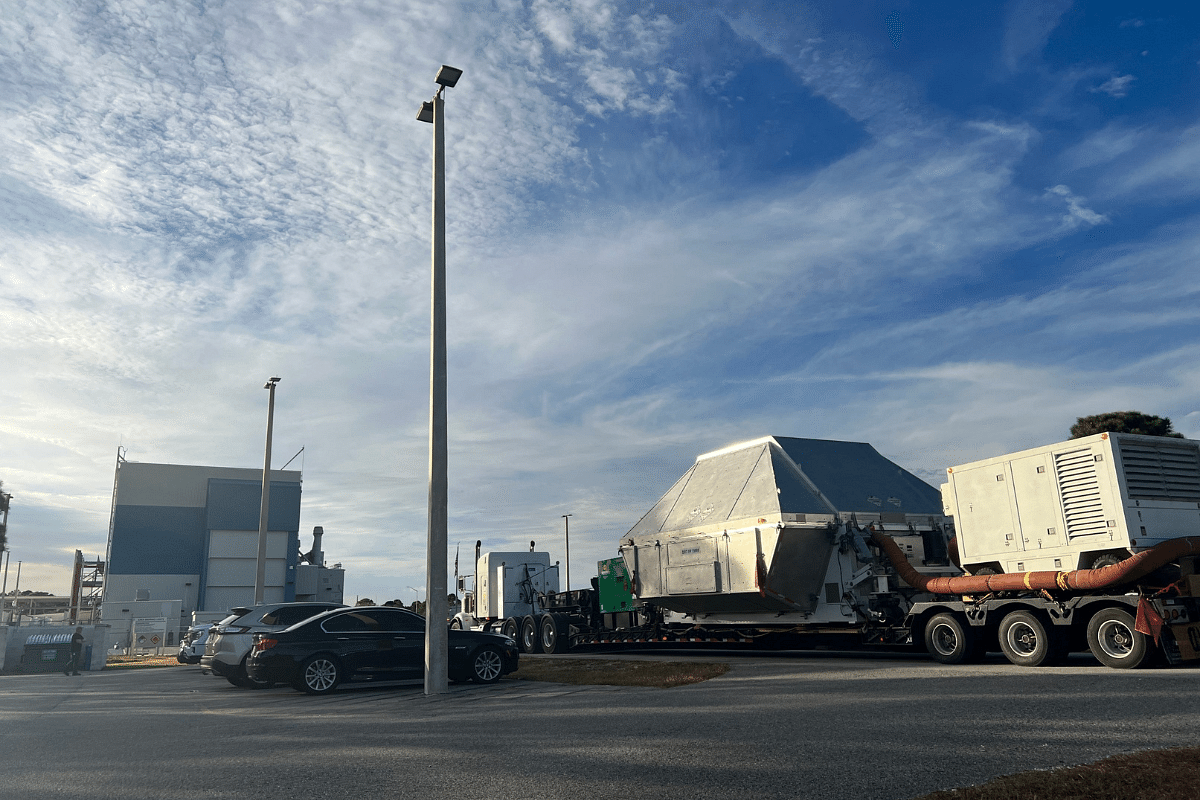Science
NASA’s Orion Spacecraft Back Home At Kennedy Space Center After Epic Ride Around The Moon
- Orion's terrestrial truck journey to Kennedy was completed after the uncrewed crew capsule had earlier accomplished a historic 25.5-day, 1.4-million-mile space voyage beyond the Moon and back to Earth.

NASA's Orion spacecraft has returned to Kennedy. (Photo: NASA's Kennedy Space Center/Twitter)
Orion is back home.
The spacecraft for the National Aeronautics and Space Administration (NASA)’s Artemis I Moon mission arrived at the Kennedy Space Center in Florida on 30 December.
From the United States (US) Naval Base San Diego in California — where Orion stayed for about a week after its parachute-assisted splashdown in the Pacific Ocean on 11 December — the Moon craft took a truck ride to Kennedy’s Multi Payload Processing Facility.
Now that it’s here, the offloading process will get underway. Payloads from the crew capsule will be dismounted after opening the hatch “as part of de-servicing operations,” NASA said in an update.
From the suited manikin that stood in for NASA crew to the heat shield and other essentials, all payload elements will be deboarded off the capsule for extensive analysis.
Only one payload, the Biology Experiment-1, was already offloaded prior to the crew capsule’s trek to Kennedy. Samples collected as part of the experiment had to be sent in for analysis before they began to degrade.
The Biology Experiment-1 is the study of the effects of space radiation using plant seeds, fungi, yeast, and algae. It flew onboard Artemis I so as to guide preparations to ship humans to the Moon and further out.
Orion's terrestrial truck journey from 21 to 30 December was completed after the uncrewed crew capsule had accomplished a historic 25.5-day, 1.4-million-mile space voyage beyond the Moon and back to Earth.
Artemis is an international programme spearheaded by NASA, leading the return of humans to the Moon, this time around for “long-term exploration and utilisation” and as a stepping stone for the next giant leap, Mars.
Artemis I was the first integrated flight test of the Space Launch System (SLS) rocket, Orion spacecraft, and exploration ground systems — the very systems that will ferry astronauts to the Moon in the future.
Orion has three main parts — a crew module, service module, and launch abort system.
The crew module is able to house four astronauts for up to 21 days. The capsule includes state-of-the-art avionics, innovative crew systems, and the largest heat shield of its kind for re-entry into Earth.
The service module will host critical life support systems for the crew, such as water, oxygen, and nitrogen, alongside the spacecraft’s propulsion, thermal control, and electrical power.
And the launch abort system is self-explanatory.
Beyond the astronauts and their belongings, the Artemis missions will fly heavy payloads of up to 27 metric tonnes. This will be accomplished with the SLS, NASA's biggest-ever rocket.
The primary goals of the Artemis I mission, according to NASA, were to demonstrate Orion’s systems in a spaceflight environment and ensure a safe re-entry, descent, splashdown, and recovery prior to the first flight with crew on Artemis II.
The Artemis missions are a vehicle for NASA to establish long-term lunar presence for scientific discovery and prepare for human missions to Mars.
Introducing ElectionsHQ + 50 Ground Reports Project
The 2024 elections might seem easy to guess, but there are some important questions that shouldn't be missed.
Do freebies still sway voters? Do people prioritise infrastructure when voting? How will Punjab vote?
The answers to these questions provide great insights into where we, as a country, are headed in the years to come.
Swarajya is starting a project with an aim to do 50 solid ground stories and a smart commentary service on WhatsApp, a one-of-a-kind. We'd love your support during this election season.
Click below to contribute.
Latest